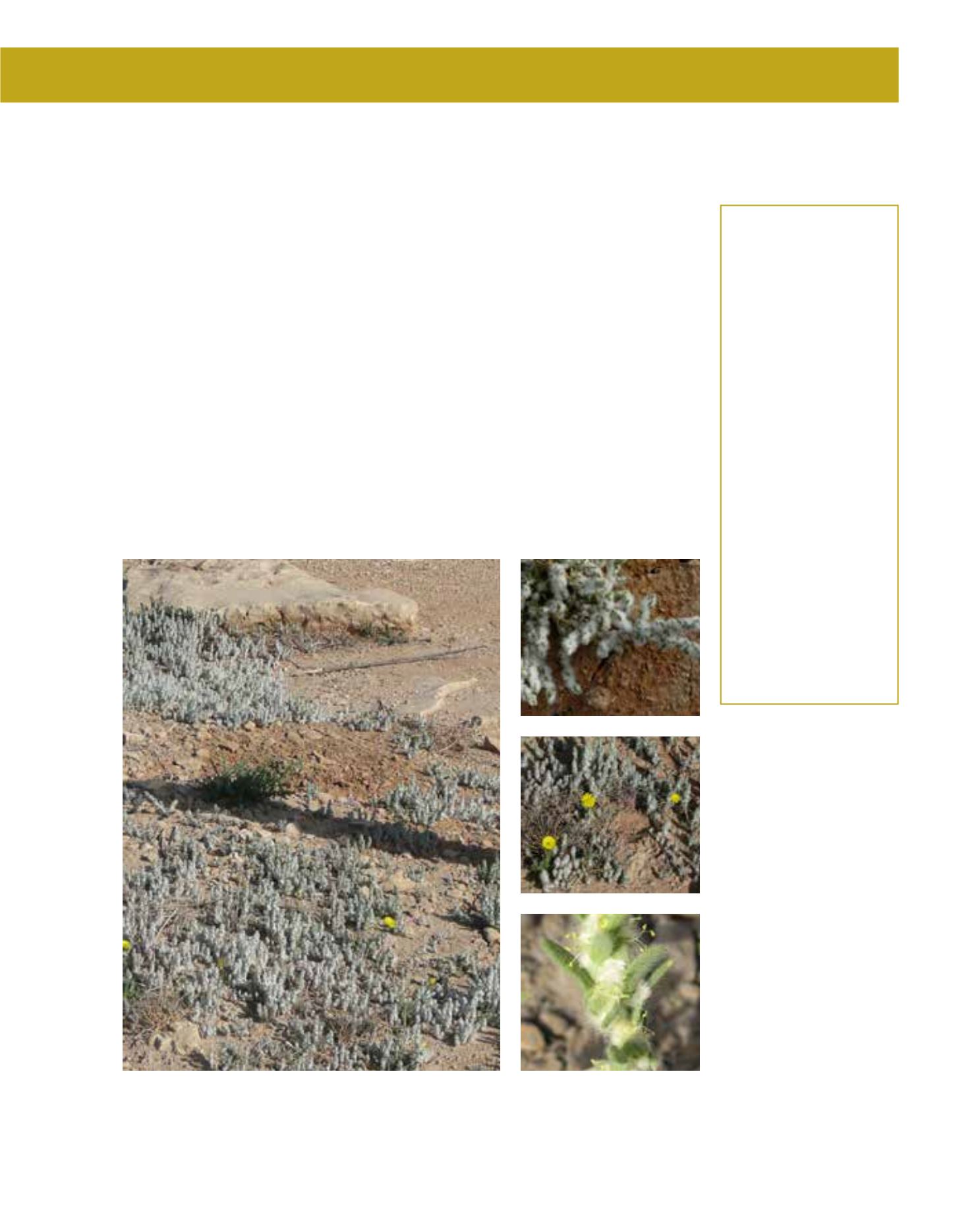

GENERAL
Origin
:
Mediterranean,
sub-tropical,
tropical
Humidity
:
extremely arid,
very arid, semi-
arid
Propagation :
direct sowing
Maintenance :
moderate
CONDITIONS
Urban climate :
resistant
Dessication :
resistant
Stagnant water :
vulnerable
Irrigation
:
none
Salinity/ppm :
high (3500 ppm)
Hardiness
:
-3°C
SHAPE
Type
:
annual, biennial
Height
:
0.15 m
Spread
:
0.25 m
Foliage
:
evergreen
FLOWER
Colour
:
white
Size
:
0.1 cm - 0.3 cm
Period
:
March - June
FRUIT
Type of fruit :
achene
Fruit size
:
0.1 cm
This is a native, halophytic species commonly seen on desert ground on saline and non-saline,
sandy soils and in desert wadis in the ArArriyadh Region. Its Arabic name is umm haas. An
annual herb with brittle branches and flowers on dense spikes in late spring, it becomes almost
completely covered by a white, cotton wool-like fleece. Propagated by seed or annual self-seeding
and perpetuating in situ, this is a plant for very extensive use in totally natural situations. When
covering gravel or sand like a carpet, its woolly appearance makes it an attractive plant with a
potentially high landscape value.
64
Bassia eriophora,
Chenopodiaceae
Bassia,
umm haas
















